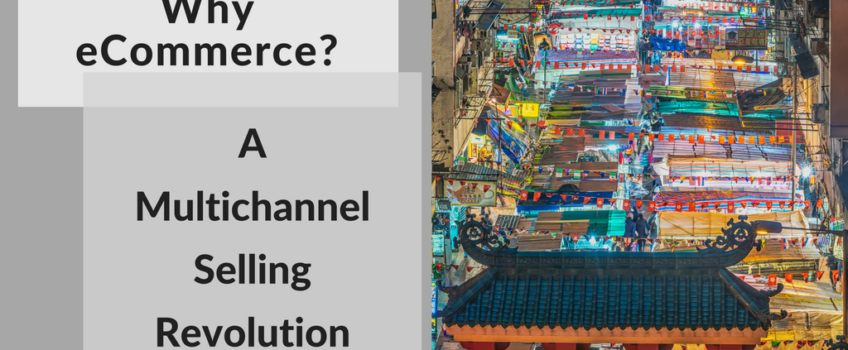
Electronic commerce, or eCommerce as it’s more commonly known is the process of selling goods or services online utilising digital payment and a website with a shopping cart. The rise of eCommerce has allowed small businesses to compete with global brands and reach customers half a world away. A virtual shop requires far less initial investment and on-going maintenance than a bricks and mortar location whilst offering almost infinite space for products. Just as in the offline world a business may choose to sell their products not only in their own ‘store’ but in multiple larger stores, this is where eCommerce becomes a multichannel selling revolution. A business can sell their products on a dozen of their own eCommerce websites, a dozen marketplaces like Amazon, Ebay or Etsy and also offline in shops or at trade shows.
Digital commerce continues to grow at a pace that dwarfs offline retail growth, during 2015 online retail sales grew by 15.2% compared with the previous year! Businesses continue to invest heavily in eCommerce because it allows them sell a wider array of products across a wider geographical area whilst increasing their margins. With drop-shipping many businesses never even have take on the expense of warehouses for storing stock.
Running a successful eCommerce website is not without it’s challenges however, having search engines and comparison websites just a click away makes online shoppers deal hungry. Pricing online is highly competitive, it is also easily checked and logged. There are browser add-ons that can produce a graph of the ‘price-over-time’ of an item across major retail sites at the click of a button. Updating and maintaining a product catalog can also become a huge time sink as inventory grows, however allowing it to become out of date is certain to hurt sales and brand image.
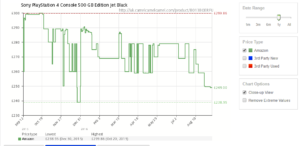
Multichannel Selling
The essence of Multichannel Selling is to use a handful of platforms in order to get your products in front of the maximum number of potential customers in such a way that you can manage and fulfill all orders in a timely manner. The two core elements for any Multichannel Selling endeavor are an inventory management system and an order fulfillment system. Once these are in place it is simply a matter of picking which sales channels suit the product and ensuring all third-party platforms and your own eCommerce websites are integrated with your inventory management system and your order fulfillment solution.
Starting considerations;
- Platform: Some of the more popular options are Magento, Shopify, Bigcommerce, WooCommerce and Volusion.
- Customization: Will the technology meet your needs with or without customization and how much customization is required to get the functionality you want?
- Scalability: Will the technology be scalable enough to be a system you can continue to work with as your business grows?
- Support: Vet the level of support that is provided. Does the platform have affordable 24-hour customer service?
- Hosting: Some solutions are software as a service (SaaS) and the hosting is included, other solutions will require that you select a website hosting provider.
- Security: Taking credit card information online must be secure and this will require an SSL certificate if one is not already included in your service package.
- Payment processing: You will also need to select a payment gateway. Work with your credit card processing provider to make sure you are PCI compliant from the start. As for specific providers, PayPal pro is a good option because it allows the website to process cards directly and accept payments made via PayPal.
- Shipping/Delivery: Will you use traditional warehousing and a courier or opt for drop shipping if the option is available?
eCommerce Marketing
There are many Digital Marketing options for an eCommerce business, most successful eCommerce businesses will employ at least a few of the following. Don’t be overwhelmed by the choice, starting with a focus on one Marketing channel and building from there is fine! Better to implement one channel, test, improve and perfect it than to attempt to use half a dozen with no measurement or optimisation.
- Search Engine Optimisation (SEO)
Being SEO optimised means ensuring you have a proper sitemap, your product catalogue has all the proper meta-tags and search-friendly URLs and that you have a general SEO campaign in place targeting general keyword phrases that are linked to your products.
- Paid Search including Google Shopping and Remarketing
Google shopping allows you to serve a product Ad including an image directly within the SERP. Your eCommerce platform should be able to integrate with Google Shopping to provide a product feed from your website, with a smart bidding strategy and competitive pricing results can be instantaneous. Remarketing ensures potential customers who have visited your website don’t forget about you helping both with conversions and Brand Awareness.
- Social Media
Social Media is a powerful tool both for Brand Awareness and customer outreach. Facebook lends itself to competitions, quizzes and product introductions. Twitter is perfect for getting lots of product links among your fans. Youtube lends itself to product demos. Social Media Marketing serves many purposes when done correctly and on top of all of them there is the ability to utilise Social Ads to laser target your buyer personas.
- Marketing Automation
Tying all of the above methods together is Marketing Automation. With a Marketing Automation platform you can have personalised, automated emails sent to entice back customers who abandon their shopping cart or to reward loyal customers after several purchases.
Optimise for Conversions
Optimising for conversions should begin with your eCommerce website design but it’s a process that never ends. Simple steps such as having a prominent Privacy Policy, contact details and reviews are essential. Ongoing testing of all kinds of elements from colour schemes to button placement will help increase your conversion rates over time. Increases of 0.01% may seem insignificant but when even just half a dozen are put together they make an obvious difference to a ‘rule-of-thumb’ average conversion rate of 2.5%. Understand your analytics, know your benchmarks and test intelligently; better conversion rates will follow.
Picking a Marketing Automation platform is a big decision. Year One costs range from £5,000 to nearly £25,000 depending on your requirements and the platform you choose.
The Marketing and Sales departments of these companies are quick to make contact and after that to make promises!
We have compared 4 of the leading automation solutions that are marketed to SMEs.
-
- Lowest Entry Price
- Comparison points for average SME usage
- Common positives and negatives from hundreds of reviews
Related Post
Effective Facebook Marketing...
With over 600 million users, Facebook represents the single most connected platform on...
- March 1, 2011
- By Nadine Thomas
- Latest Online Trends
Monitor, Influence and Lead...
Get Actively Involved in the Outcome of Search Results Don’t take negative publicity...
- April 28, 2011
- By Rob Thomas
- ORM
Free Online Reputation...
Listen to What’s Being Said About You Online (Free online reputation monitoring...
- May 5, 2011
- By Rob Thomas
- ORM
Top Tips for Product Page...
As the internet evolves and user expectation becomes increasingly sophisticated, creating...
- May 31, 2011
- By Rob Thomas
- e-Commerce
How To Drive Sales With...
Landing pages have long been the primary tool of the web-savvy marketer. Whether the...
- June 12, 2011
- By Nadine Thomas
- e-Commerce
Top Tips for Product Page...
Your website marketing activities are geared to getting a qualified audience to your...
- June 14, 2011
- By Rob Thomas
- e-Commerce



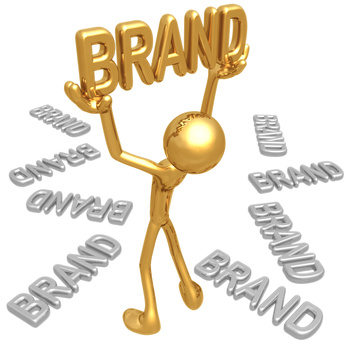

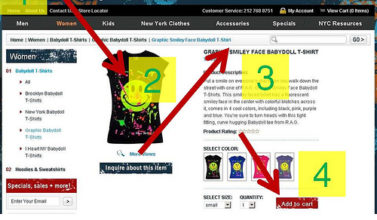
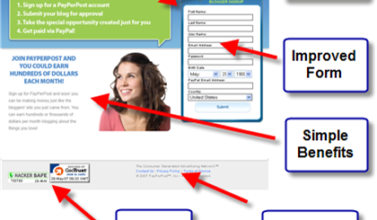
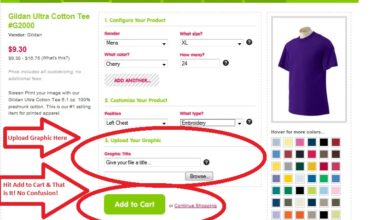




Leave a Comments